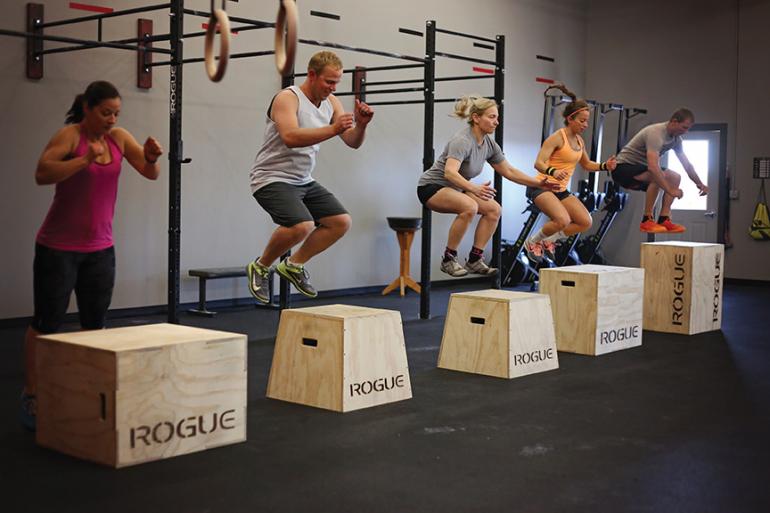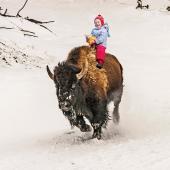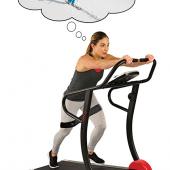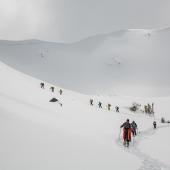Work Now, Ski Later
Do CrossFit for a better season.
Like many Bozemanites, I began CrossFit to get in shape for the upcoming ski season. The winter before, as a volunteer ski patrol at Big Sky, I found myself transporting a heavy guy down the front of Hangman’s and thinking that a) I was going to die, b) he was going to die, c) someone in front of us was going to die, or d) all of the above. I promised myself that I’d be in better shape next season, and a fall CrossFit regimen seemed like the best way to do that.
Most likely, your own reasons for wanting to be ready for ski season involve preventing injury, avoiding muscle-soreness, or increasing your ability. Regardless of the reasons, CrossFit is the perfect solution. Many workouts feature specific lifts like squats and deadlifts. Keeping your glutes, hamstrings, and quads in balance will greatly reduce your chance of incurring the dreaded torn ACL. Learning how to properly execute squats and deadlifts, and building strength through these movements, will eliminate these imbalances and keep you on the hill and off the couch.
While many skiers in a globo-gym already strive to keep their legs strong, they forget that skiing and riding are full-body activities. Core and upper-body strength are just as important. Cruising down the slopes requires strength and agility, and uses short bursts of energy. The harder the terrain, the more your body will need to call on each and every muscle. CrossFit workouts are designed with functional movements to strengthen and condition your entire body.
Let’s not forget that skiing and snowboarding also require endurance. You don’t want to be the one everyone is constantly waiting for, and the intensity of a CrossFit workout is perfect for preventing this. Most workouts are somewhere in the five- to 20-minute range, which is about how long it takes to bomb down most runs, from the short chutes at Bridger to the marathon groomers at Moonlight.
In addition, CrossFit prepares you for the unknown by providing varied workouts each day. Injuries often occur on the slope when something unexpected happens such as a small child cutting in front of you or a sudden drop causing your butt to hit the back of your skis. If your body is well-conditioned and agile, you’ll have a much better chance of continuing your day unscathed.
CrossFit is defined as constantly changing, functional movements, done at high-intensity. Skiing and snowboarding could be defined in the same way. They don’t require hours in the gym dividing cardio days from strength days, or working out alone and hoping that you’re performing the movements correctly. In a well-run CrossFit box, you’ll find knowledgeable coaches, small class sizes, and some of the best friends and skiing buddies you will ever make.
Terri Sipes is the owner of CrossFit Belgrade. For more info, visit crossfitbelgrade.com.












